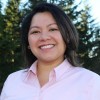
Lifelong Learning
Posted by Donna Mae Scheib on October 06, 2016
Lifelong Learning
For various reasons, many children were unable to obtain an elementary or secondary education. Some of these had the ability and the desire to get a high school diploma, but they kept encountering road blocks along the way. Eventually educational authorities started trying harder to find ways to help individual’s access elementary and secondary educational facilities. Basic education learning outlets began to pop up; and not too long thereafter, the GED (Grade Equivalency Diploma) came into existence. Many children, middle-agers and seniors took advantage of these opportunities. This was good news fodder for the media. There were pictures and write-ups of people of all ages achieving their dreams. Many were especially poignant such as the picture of a 92 year old great grandmother—who had never missed a day of school-- holding up her high school diploma. Soon the term, “lifelong learning”was being used, and all sorts of ways and means to take advantage of this sprung up. Recognizing that some people lived too far away to access some of these opportunities, distance education came into being.
Slowly but surely it was realized that education did not have to consist solely of academic subjects, but could also contain classes in card games, knitting, quilting, duvet making, music lessons on various instruments, sports of all kinds, carpentry, etcetera.
These classes opened up a whole new world for the “students,” giving them valuable and yearned-for knowledge, but also a much expanded social life.
Today’s duvet was referred to as a feather bed, and still is by some. This consisted of picking feathers off ducks and then stripping the feathers bare, down to their stems. This endeavor—called a “feather bee”-- was carried out by at least four women sitting around a huge table. There seemed to be feathers all over the place much to the enjoyment of the children. The adults—mostly seniors—were too busy gossiping while picking feathers and eating delicious home baked goodies to scold them for any harmless mischief. Each of these women would also have a feather bee. Members of these groups became friends with each other and enjoyed social activities of various kinds other than feather bees, with the result that nobody was alone. There were no neglected lonely seniors!
There were and still are quilting classes for all ages. Quilting groups are often formed. As the newly minted quilters progress, some make very intricate designs on their quilts. Some make various designs just because they like them, others make some in memory of someone or some event. There are also quilting competitions, which can be fierce but enjoyable—And it is not always seniors who win, although quite often it is!
There are also quite a few sewing and knitting classes. The sewing classes are most often put on by the shops that sell the material. Grandmothers love to sew and knit for their grandchildren. Again for many, socializing is also an important factor.
If the men had been able to attend high school, they likely took shop classes. The graduates had options. They could just work for themselves or get a job. Then, too, in the country, there seldom existed a man who built a barn or a house by himself. It was a neighborhood endeavor! Building a barn, usually referred to as a barn raising, often could be done in a day inspite of all the food the women were feeding them! Not only is there no retirement age for individuals working as barn raisers and house builders, but by the time they have built several barns and houses, they have in all likelihood become good carpenters, neighbors and friends.
Folks in the cities (mostly men) can also practice their carpentry skills while doing good by helping to build homes for Habitat for Humanity. Retired men who, after a lifetime of carpentry, simply cannot get carpentry out of their blood, are often drawn here as volunteers, something that many seniors do.







